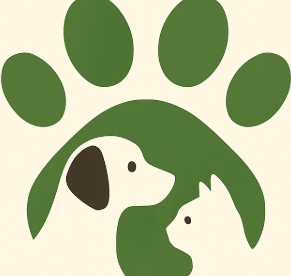
SEO Keyword: Enrich Your Dog's Life with Engaging Activities
As pet lovers, we often find ourselves wanting the best for our furry friends. It's common to assume that providing them with plenty of toys equates to enriching their lives. However, recent insights highlight that enrichment goes far beyond mere toy possession. In the act of understanding how best to engage with our dogs, we discover the significance of structured versus passive enrichment.
In the video Toys vs. True Enrichment: What Does Your Dog Really Need?, the discussion dives into the concept of true enrichment for pets, exploring key insights that sparked deeper analysis on our end.
The Misconception of Passive Play
It's tempting to think that simply leaving toys out for our dogs is sufficient. Yet, as discussed in the video Toys vs. True Enrichment: What Does Your Dog Really Need?, the toys can inadvertently stimulate predatory behaviors—shaking, destroying, and "killing" their playthings. This could lead to unwanted behavioral practices. Here, structured enrichment emerges as the antidote. Rather than having toys lying around for endless playtime, it’s vital to engage your dog through intentional activities that enhance learning and bonding.
Structured Enrichment: A Game Changer
Structured enrichment is about providing activities that challenge your dog mentally and physically. Picture this: instead of letting your dog play with a toy whenever it pleases, you initiate a training session that includes commands like 'sit' and 'look at me.' Once your dog is focused and engaged, you can introduce the toy, followed by a playful chase in the yard. This method not only builds impulse control but also strengthens the bond you share with your canine companion. A few dedicated minutes each day can dramatically transform how your dog experiences both play and learning.
The Benefits of Interactive Playtime
Engaging with your dog in structured play brings about numerous benefits. For one, these sessions provide mental stimulation, which is crucial for your dog’s overall well-being. When a dog engages in active play, it works through anxiety, boredom, and excess energy—all common sources of behavioral issues. Furthermore, this experience builds trust between you and your dog; as they learn to follow your cues and commands, they become more responsive and well-behaved.
How to Implement Structured Enrichment
To start integrating this enriching practice into your routine, begin by designating specific times for structured play. You can create engaging scenarios that involve commands, games, and rewards. For example, make a simple game out of 'drop it,' where you challenge your dog to bring their toy back only to request a command before allowing them to continue playing. The key is consistency and positivity—encouraging your dog with praise reinforces good behavior and strengthens your relationship.
By recognizing that true enrichment means far more than just toys scattered around the house, we embrace a holistic approach that fosters deeper connections and healthier dogs. So, are you ready to enhance your dog’s life through structured engagement?
In summary, playtime should be more than just downtime for our pets; it should be an opportunity for learning, bonding, and growth. As you navigate your dog’s needs, consider enriching your routine with structured interactions that promote both mental and emotional well-being.
 Add Row
Add Row  Add
Add 




Write A Comment